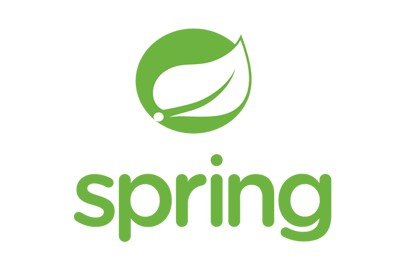스프링 MVC 1편 - 백엔드 웹 개발 핵심 기술
- Spring mvc1(1) 서블릿
- Spring mvc1(2) 서블릿, jsp, mvc 패턴
- Spring mvc1(3) mvc 프레임워크 만들기
- Spring mvc1 스프링 mvc 구조이해
- Spring mvc1(1) 스프링 mvc 기본기능
- Spring mvc1(2) 스프링 mvc 웹페이지 만들기
Spring mvc1(2) 스프링 mvc 웹페이지 만들기
0. 요구사항 분석
상품 도메인 모델
- 상품 ID
- 상품명
- 가격
- 수량
상품 관리 기능
- 상품 목록
- 상품 상세
- 상품 등록
- 상품 수정
서비스 화면
-
 스프링 MVC-웹페이지 만들기/image-20230310175801512.png)
- 서비스 제공 흐름
- 요구사항이 정리되고 디자이너, 웹 퍼블리셔, 백엔드 개발자가 업무를 나누어 진행한다.
- 디자이너: 요구사항에 맞도록 디자인하고, 디자인 결과물을 웹 퍼블리셔에게 넘겨준다.
- 웹 퍼블리셔: 다자이너에서 받은 디자인을 기반으로 HTML, CSS를 만들어 개발자에게 제공한다.
- 백엔드 개발자: 디자이너, 웹 퍼블리셔를 통해서 HTML 화면이 나오기 전까지 시스템을 설계하고, 핵심 비즈니스 모델을 개발한다. 이후 HTML이 나오면 이 HTML을 뷰 템플릿으로 변환해서 동적으로 화면을 그리고, 또 웹 화면의 흐름을 제어한다.
1. 상품 도메인 개발
Item - 상품 객체
-
package hello.itemservice.domain.item; import lombok.Data; import lombok.Getter; import lombok.Setter; @Data public class Item { private Long id; private String itemName; private Integer price; private Integer quantity; public Item(){} public Item(String itemName, Integer price, Integer quantity){ this.itemName = itemName; this.price = price; this.quantity = quantity; } }
ItemRepository - 상품 저장소
-
package hello.itemservice.domain.item; import org.springframework.stereotype.Repository; import org.springframework.web.bind.annotation.RestController; import java.util.ArrayList; import java.util.HashMap; import java.util.List; import java.util.Map; @Repository public class ItemRepository { private static final Map<Long, Item> store = new HashMap<>(); private static Long sequence = 0L; public Map getIntance(){ return store; } public Item save(Item item){ item.setId(++sequence); store.put(item.getId(), item); return item; } public Item findById(Long id){ return store.get(id); } public List<Item> findAll(){ return new ArrayList<>(store.values()); } public void update(Long itemId, Item updateParam){ Item findItem = findById(itemId); findItem.setItemName(updateParam.getItemName()); findItem.setPrice(updateParam.getPrice()); findItem.setQuantity(updateParam.getQuantity()); } public void clearStore(){ store.clear(); } }
2. 상품 서비스 HTML
부트스트랩
- 참고로 HTML을 편리하게 개발하기 위해 부트스트랩 사용했다.
- 부트스트랩 다운로드 후
bootstrap.min.css를 복사해서resources/static/css/bootstrap.min.css에 추가한다.
HTML 파일 다운로드
- 강의자료 7. 스프링 MVC - 웹페이지 만들기 참조해서 ctrl c,v (resources.static.html 에 넣는다)
- 다운로드 후 확인 시 절대경로를 붙여넣거나(
C:\Users\kimhobeen\IdeaProjects\item-service\out\production\resources\static\html\item.html) - 서버 실행 후 들어가도 된다. (
http://localhost:8080/html/item.html)
3. 상품 목록 - 타임리프
BasicItemController
-
package hello.itemservice.web.basic; import hello.itemservice.domain.item.Item; import hello.itemservice.domain.item.ItemRepository; import jakarta.annotation.PostConstruct; import lombok.RequiredArgsConstructor; import org.springframework.beans.factory.annotation.Autowired; import org.springframework.stereotype.Controller; import org.springframework.ui.Model; import org.springframework.web.bind.annotation.GetMapping; import org.springframework.web.bind.annotation.RequestMapping; import java.util.List; @Controller @RequestMapping("/basic/items") @RequiredArgsConstructor public class BasicItemController { //스프링 빈 등록 private final ItemRepository itemRepository; @GetMapping public String items(Model model) { List<Item> items = itemRepository.findAll(); model.addAttribute("items", items); return "basic/items"; } /** * 테스트용 데이터 추가 */ @PostConstruct public void init(){ itemRepository.save(new Item("itemA", 10000, 10)); itemRepository.save(new Item("itemB", 20000, 20)); } }
뷰 템플릿(templates) 영역
-
/resources/static/items.html -> 복사 -> /resources/templates/basic/items.html
-
<!DOCTYPE HTML> <html xmlns:th="http://www.thymeleaf.org"> <head> <meta charset="utf-8"> <link th:href="@{/css/bootstrap.min.css}" href="../css/bootstrap.min.css" rel="stylesheet"> </head> <body> <div class="container" style="max-width: 600px"> <div class="py-5 text-center"> <h2>상품 목록</h2> </div> <div class="row"> <div class="col"> <button class="btn btn-primary float-end" onclick="location.href='addForm.html'" th:onclick="|location.href='@{/basic/items/add}'|" type="button">상품 등록</button> </div> </div> <hr class="my-4"> <div> <table class="table"> <thead> <tr> <th>ID</th> <th>상품명</th> <th>가격</th> <th>수량</th> </tr> </thead> <tbody> <tr th:each="item : ${items}"> <td><a href="item.html" th:href="@{/basic/items/{itemId}(itemId=${item.id})}" th:text="${item.id}">회원id</a></td> <td><a href="item.html" th:href="@{|/basic/items/${item.id}|}" th:text="${item.itemName}">상품명</a></td> <td th:text="${item.price}">10000</td> <td th:text="${item.quantity}">10</td> </tr> </tbody> </table> </div> </div> <!-- /container --> </body> </html>
타임리프 사용 선언
속성 변경 - th:href
th:href="@{/css/bootstrap.min.css}"- href=”value1” 을 th:href=”value2” 의 값으로 변경한다.
- 타임리프 뷰 템플릿을 거치게 되면 원래 값을 th:xxx 값으로 변경한다. 만약 값이 없다면 새로 생성한다.
- HTML을 그대로 볼 때는 href 속성이 사용되고, 뷰 템플릿을 거치면 th:href 의 값이 href 로 대체되면서 동적으로 변경할 수 있다.
URL 링크 표현식 - @{…},
th:href="@{/css/bootstrap.min.css}"- @{…} : 타임리프는 URL 링크를 사용하는 경우 @{…} 를 사용한다. 이것을 URL 링크 표현식이라 한다. URL 링크 표현식을 사용하면 서블릿 컨텍스트를 자동으로 포함한다.
속성 변경 - th:onclick
onclick="location.href='addForm.html'"->th:onclick="|location.href='@{/basic/items/add}'|"- 리터럴 대체 문법이 사용되었다.
리터럴 대체 - |…|
-
… :이렇게 사용한다. - 타임리프에서 문자와 표현식 등은 분리되어 있기 때문에 더해서 사용해야 한다.
<span th:text="'Welcome to our application, ' + ${user.name} + '!'">
- 다음과 같이 리터럴 대체 문법을 사용하면, 더하기 없이 편리하게 사용할 수 있다.
<span th:text="|Welcome to our application, ${user.name}!|">
반복 출력 - th:each
<tr th:each="item : ${items}">- 반복은 th:each 를 사용한다. 이렇게 하면 모델에 포함된 items 컬렉션 데이터가 item 변수에 하나씩 포함되고, 반복문 안에서 item 변수를 사용할 수 있다.
- 컬렉션의 수 만큼 .. 이 하위 테그를 포함해서 생성된다.
변수 표현식 - ${…}
<td th:text="${item.price}">10000</td>- 10000 모델에 포함된 값이나, 타임리프 변수로 선언한 값을 조회할 수 있다.
- 프로퍼티 접근법을 사용한다. ( item.getPrice() )
내용 변경 - th:text
<td th:text="${item.price}">10000</td>- 내용의 값을 th:text 의 값으로 변경한다.
- 여기서는 10000을 ${item.price} 의 값으로 변경한다.
URL 링크 표현식2 - @{…},
th:href="@{/basic/items/{itemId}(itemId=${item.id})}"- URL 링크 표현식을 사용하면 경로를 템플릿처럼 편리하게 사용할 수 있다.
- 경로 변수( {itemId} ) 뿐만 아니라 쿼리 파라미터도 생성한다.
- 예)
th:href="@{/basic/items/{itemId}(itemId=${item.id}, query='test')}"생성 링크: http://localhost:8080/basic/items/1?query=test
URL 링크 간단히
th:href="@{|/basic/items/${item.id}|}"(URL 링크 표현식2 와 비교)- 리터럴 대체 문법을 활용해서 간단히 사용할 수도 있다.
4. 상품등록 상세
- 상품 상세 컨트롤러와 뷰를 개발한다.
BasicItemController에 추가
-
@GetMapping("/{itemId}") public String item(@PathVariable long itemId, Model model){ Item item = itemRepository.findById(itemId); model.addAttribute("item", item); return "basic/item"; }- PathVariable 과 Model 을 이용하여 http 요청을 받는다.
상품 상세 뷰
-
/resources/templates/basic/item.html -
<!DOCTYPE HTML> <html xmlns:th="http://www.thymeleaf.org"> <head> <meta charset="utf-8"> <link th:href="@{/css/bootstrap.min.css}" href="../css/bootstrap.min.css" rel="stylesheet"> <style> .container { max-width: 560px; } </style> </head> <body> <div class="container"> <div class="py-5 text-center"> <h2>상품 상세</h2> </div> <div> <label for="itemId">상품 ID</label> <input type="text" id="itemId" name="itemId" class="form-control" th:value="${item.id}" value="1" readonly> </div> <div> <label for="itemName">상품명</label> <input type="text" id="itemName" name="itemName" class="form-control" th:value="${item.itemName}" value="상품A" readonly> </div> <div> <label for="price">가격</label> <input type="text" id="price" name="price" class="form-control" th:value="${item.price}" value="10000" readonly> </div> <div> <label for="quantity">수량</label> <input type="text" id="quantity" name="quantity" class="form-control" th:value="${item.quantity}" value="10" readonly> </div> <hr class="my-4"> <div class="row"> <div class="col"> <button class="w-100 btn btn-primary btn-lg" onclick="location.href='editForm.html'" th:onclick ="|location.href='@{/basic/items/{itemId}/edit(itemId=${item.id})}'|" type="button">상품 수정</button> </div> <div class="col"> <button class="w-100 btn btn-secondary btn-lg" onclick="location.href='items.html'" th:onclick ="|location.href='@{/basic/items}'|" type="button">목록으로</button> </div> </div> </div> <!-- /container --> </body> </html> - 상품 id, 상품명, 수량, 가격에는
th:value=${item.xxx}를 통해 속성을 변경한다. - ‘상품수정’ 및 ‘목록으로’ 링크도 리터럴 대체로 바꾼다.
5. 상품 등록 폼
BasicItemController에 추가
-
@GetMapping("/add") public String addForm(){ return "basic/addForm"; } // @PostMapping("/add") public String addItemV1(@RequestParam String itemName, @RequestParam int price, @RequestParam int quantity, Model model){ Item item = new Item(); item.setItemName(itemName); item.setPrice(price); item.setQuantity(quantity); itemRepository.save(item); model.addAttribute("item", item); return "basic/item"; } // @PostMapping("/add") public String addItemV2(@ModelAttribute("item") Item item){ itemRepository.save(item); //자동으로 해준다. 생략 가능 //model.addAttribute("item", item); return "basic/item"; } // @PostMapping("/add") //클래스 명에서 첫글자만 소문자로 바꿔서 이름으로 저장한다. (Item -> item) public String addItemV3(@ModelAttribute Item item){ itemRepository.save(item); return "basic/item"; } @PostMapping("/add") public String addItemV4(Item item){ itemRepository.save(item); return "basic/item"; } - V1 : @requestParam 으로 받아서 model 로 보낸다
- V2 : @ModelAttribute 로 Item 을 받는다. 이러면 model 이 필요없다.
model.addAttribute("item", item);을 자동으로 해준다.
- V3 : @ModelAttibute 에서 name 속성 생략 가능하다. 그렇게 되면 클래스에서 첫글자만 소문자로 바꿔서 저장한다.
- Item -> “item”
- V4 : @ModelAttibute 도 생략가능하다.
상품 등록 폼 뷰
-
/resources/templates/basic/addForm.html -
<!DOCTYPE HTML> <html xmlns:th="http://www.thymeleaf.org"> <head> <meta charset="utf-8"> <link th:href="@{/css/bootstrap.min.css}" href="../css/bootstrap.min.css" rel="stylesheet"> <style> .container { max-width: 560px; } </style> </head> <body> <div class="container"> <div class="py-5 text-center"> <h2>상품 등록 폼</h2> </div> <h4 class="mb-3">상품 입력</h4> <form th:action action="item.html" method="post"> <div> <label for="itemName">상품명</label> <input type="text" id="itemName" name="itemName" class="form-control" placeholder="이름을 입력하세요"> </div> <div> <label for="price">가격</label> <input type="text" id="price" name="price" class="form-control" placeholder="가격을 입력하세요"> </div> <div> <label for="quantity">수량</label> <input type="text" id="quantity" name="quantity" class="form-control" placeholder="수량을 입력하세요"> </div> <hr class="my-4"> <div class="row"> <div class="col"> <button class="w-100 btn btn-primary btn-lg" type="submit">상품 등록</button> </div> <div class="col"> <button class="w-100 btn btn-secondary btn-lg" onclick="location.href='items.html'" th:onclick ="|location.href='@{/basic/items}'|" type="button">취소</button> </div> </div> </form> </div> <!-- /container --> </body> </html>- post 와 get 의 url 이 같으로 여기서는 form 태그에서
th:action으로만 설정해주면 get 과 같은 url 에서 실행된다. - 취소 버튼은
th:onclick ="|location.href='@{/basic/items}'|"로 설정하여 목록으로 가게 한다.
- post 와 get 의 url 이 같으로 여기서는 form 태그에서
5. 상품 수정
상품 수정 폼 컨트롤러
-
BasicItemController에 추가
-
@GetMapping("{itemId}/edit") public String editorm(@PathVariable long itemId, Model model){ Item item = itemRepository.findById(itemId); model.addAttribute("item", item); return "/basic/editForm"; } - 수정에 필요한 정보를 조회하고, 수정용 폼 뷰를 호출한다.
상품 수정 폼 뷰
-
/resources/templates/basic/editForm.html -
<!DOCTYPE HTML> <html xmlns:th="http://www.thymeleaf.org"> <head> <meta charset="utf-8"> <link th:href="@{/css/bootstrap.min.css}" href="../css/bootstrap.min.css" rel="stylesheet"> <style> .container { max-width: 560px; } </style> </head> <body> <div class="container"> <div class="py-5 text-center"> <h2>상품 수정 폼</h2> </div> <form action="item.html" th:action method="post"> <div> <label for="id">상품 ID</label> <input type="text" id="id" name="id" class="form-control" value="1" th:value = "${item.id}" readonly> </div> <div> <label for="itemName">상품명</label> <input type="text" id="itemName" name="itemName" class="form-control" value="상품A" th:value="${item.itemName}" > </div> <div> <label for="price">가격</label> <input type="text" id="price" name="price" class="form-control" value="10000" th:value = "${item.price}" > </div> <div> <label for="quantity">수량</label> <input type="text" id="quantity" name="quantity" class="form-control" value="10" th:value = "${item.quantity}" > </div> <hr class="my-4"> <div class="row"> <div class="col"> <button class="w-100 btn btn-primary btn-lg" type="submit">저장 </button> </div> <div class="col"> <button class="w-100 btn btn-secondary btn-lg" onclick="location.href='item.html'" th:onclick="|location.href='@{/basic/items/{itemId}(itemId=${item.id})}'|" type="button">취소</button> </div> </div> </form> </div> <!-- /container --> </body> </html>- form action 은
th:action - 각 input 태그에 value 값으로
${item.xxx}를 넣어준다. id 는 readonly 를 붙여서 수정못하게 한다. - 취소는 상품상세로 돌아가도록
th:onclick사용
- form action 은
상품 수정 개발
-
@PostMapping("{itemId}/edit") public String edit(@PathVariable Long itemId, @ModelAttribute Item item){ itemRepository.update(itemId, item); return "redirect:/basic/items/{itemId}"; }
리다이렉트
- 상품 수정은 마지막에 뷰 템플릿을 호출하는 대신에 상품 상세 화면으로 이동하도록 리다이렉트를 호출한다.
- 컨트롤러에 매핑된 @PathVariable 의 값은 redirect 에도 사용 할 수 있다.
6. PRG (Post/Redirect/Get, addForm 해결)
- /add 에서 상품 등록을 완료하고 웹 브라우저의 새로고침 버튼을 클릭하면 상품이 계속 중복등록이 되는 문제가 있다.
POST 등록 후 새로 고침 설명
 스프링 MVC-웹페이지 만들기/image-20230312122839841.png)
- 상품등록을 클릭하면 Get 으로 상품등록 폼을 보여준다.
- 상품 등록 폼에서 데이터를 입력하고 저장을 선택하면 POST /add + 상품 데이터를 서버로 전송한다.
- 이 상태에서 새로 고침을 또 선택하면 마지막에 전송한 POST /add + 상품 데이터를 서버로 다시 전송하게 된다. 그래서 내용은 같고, ID만 다른 상품 데이터가 계속 쌓이게 된다
 스프링 MVC-웹페이지 만들기/image-20230312122938600.png)
- 웹 브라우저의 새로 고침은 마지막에 서버에 전송한 데이터를 다시 전송한다.
- 새로 고침 문제를 해결하려면 상품 저장 후에 뷰 템플릿으로 이동하는 것이 아니라, 상품 상세 화면으로 리다이렉트를 호출해주면 된다.
- 웹 브라우저는 리다이렉트의 영향으로 상품 저장 후에 실제 상품 상세 화면으로 다시 이동한다. 따라서 마지막에 호출한 내용이 상품 상세 화면인 GET /items/{id} 가 되는 것이다.
BasicItemController에 추가
-
@PostMapping("/add") public String addItemV5(Item item){ itemRepository.save(item); return "redirect:/basic/items/" + item.getId(); } - 상품 등록 처리 이후에 뷰 템플릿이 아니라 상품 상세 화면으로 리다이렉트 하도록 코드를 작성한다.
- 이런 문제 해결 방식을 PRG Post/Redirect/Get 라 한다.
- redirect에서 +item.getId() 처럼 URL에 변수를 더해서 사용하는 것은 URL 인코딩이 안되기 때문에 위험하다. 다음에 설명하는 RedirectAttributes 를 사용하자.
7. RedirectAttributes
- 저장이 잘 되었으면 상품 상세 화면에 “저장되었습니다”라는 메시지를 보여달라는 요구사항이 왔다.
BasicItemController에 추가
-
@PostMapping("/add") public String addItemV6(Item item, RedirectAttributes redirectAttributes){ Item savedItem = itemRepository.save(item); redirectAttributes.addAttribute("itemId", savedItem.getId()); redirectAttributes.addAttribute("status", true); return "redirect:/basic/items/{itemId}"; }
RedirectAttributes
- RedirectAttributes 를 사용하면 URL 인코딩도 해주고, pathVarible , 쿼리 파라미터까지 처리해준다.
redirect:/basic/items/{itemId}- pathVariable 바인딩: {itemId}
- 나머지는 쿼리 파라미터로 처리: ?status=true
뷰 템플릿 메시지 추가
-
resources/templates/basic/item.html -
<div class="container"> <div class="py-5 text-center"> <h2>상품 상세</h2> </div> <h2 th:if="${param.status}" th:text="'저장 완료'"></h2>th:if: 해당 조건이 참이면 실행${param.status}: 타임리프에서 쿼리 파라미터를 편리하게 조회하는 기능- 원래는 컨트롤러에서 모델에 직접 담고 값을 꺼내야 한다. 그런데 쿼리 파라미터는 자주 사용해서 타임리프에서 직접 지원한다.
- 템플릿에 메시지를 추가하고 실행해보면 “저장 완료!” 라는 메시지가 나오는 것을 확인할 수 있다. 물론 상품 목록에서 상품 상세로 이동한 경우에는 해당 메시지가 출력되지 않는다.
 스프링 MVC-웹페이지 만들기/image-20230310175819887.png)



댓글남기기